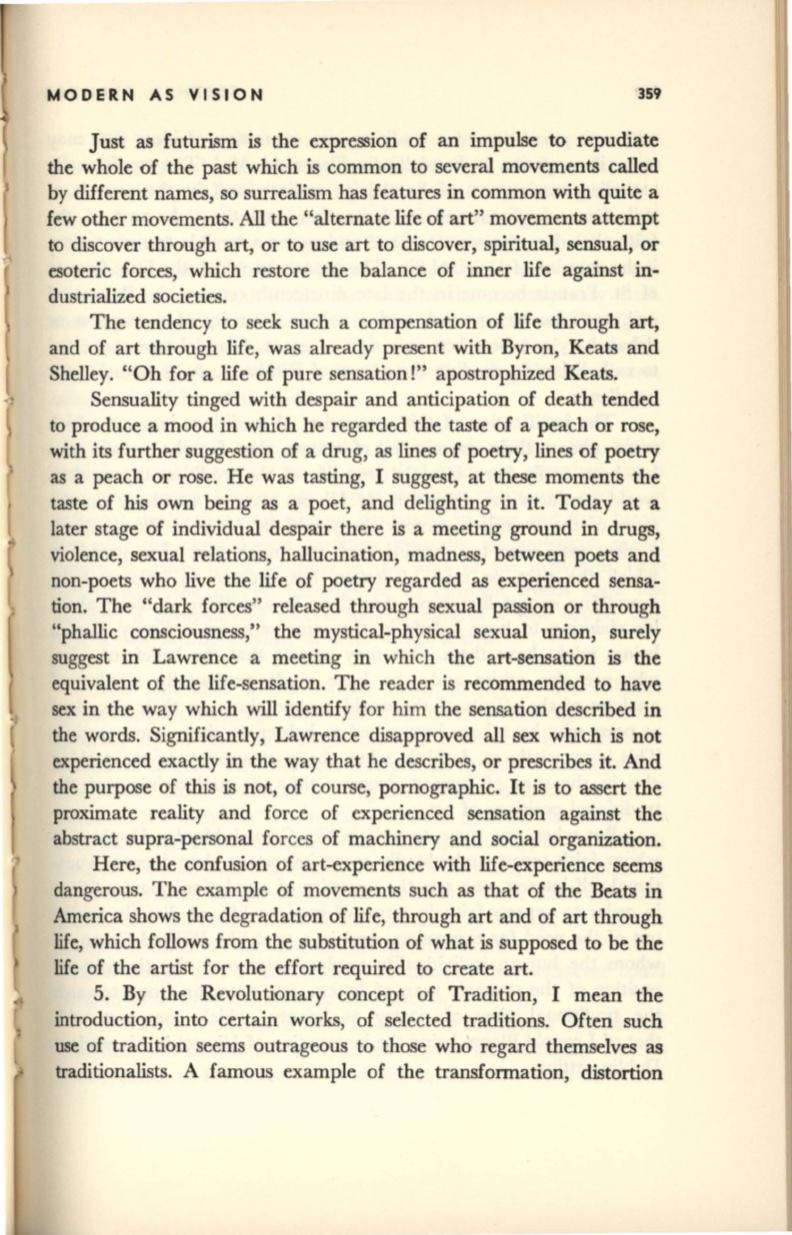
MODERN AS VISION
359
Just as futurism is the expression of an impulse to repudiate
the whole of the past which is common to several movements called
by different names, so surrealism has features in common with quite a
few other movements. All the "alternate life of art" movements attempt
to discover through art, or to use
art
to discover, spiritual, sensual, or
esoteric forces, which restore the balance of inner life against
in–
dustrialized societies.
The tendency to seek such a compensation of life through
art,
and of art through life, was already present with Byron, Keats and
Shelley. "Oh for a life of pure sensation!" apostrophized Keats.
Sensuality tinged with despair and anticipation of death tended
to produce a mood in which he regarded the taste of a peach or rose,
with its further suggestion of a drug, as lines of poetry, lines of poetry
as a peach or rose. He was tasting, I suggest, at these moments the
taste of
his
own being as a poet, and delighting in it. Today at a
later stage of individual despair there is a meeting ground in drugs,
violence, sexual relations, hallucination, madness, between poets and
non-poets who live the life of poetry regarded as experienced sensa–
tion. The "dark forces" released through sexual passion or through
"phallic consciousness," the mystical-physical sexual union, surely
suggest in Lawrence a meeting in which the art-sensation is the
equivalent of the life-sensation. The reader is recommended to have
sex in the way which
will
identify for him the sensation described in
the words. Significantly, Lawrence disapproved all sex which is not
experienced exactly in the way that he describes, or prescribes
it.
And
the purpose of this is not, of course, pornographic. It is to assert the
proximate reality and force of experienced sensation against the
abstract supra-personal forces of machinery and social organization.
Here, the confusion of art-experience with life-experience seems
dangerous. The example of movements such as that of the Beats in
America shows the degradation of life, through art and of art through
life, which follows from the substitution of what is supposed to be the
life of the artist for the effort required to create art.
5. By the Revolutionary concept of Tradition, I mean the
introduction, into certain works, of selected traditions. Often such
use of tradition seems outrageous to those who regard themselves as
traditionalists. A famous example of the transformation, distortion


